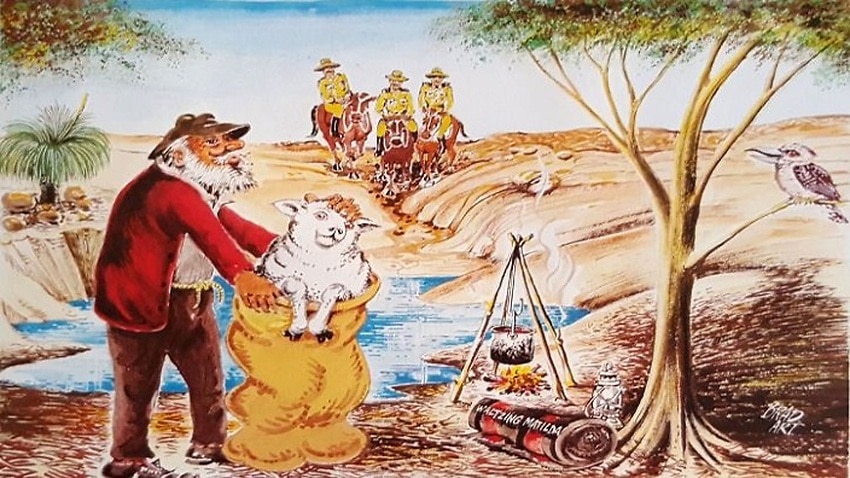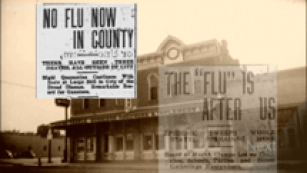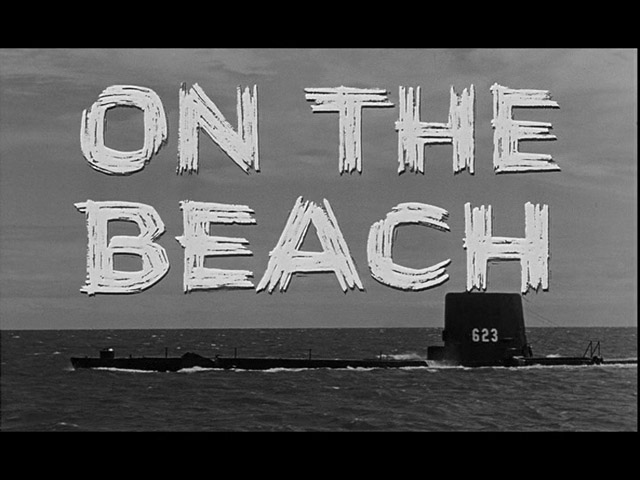The Swagman.
Andrew Barton “Banjo” Paterson wrote the famous Australian bush ballad “Waltzing Matilda” in 1895. Most people know the tune or at least know some of the lyrics by heart. It is and was so catchy that it became Australia’s unofficial national anthem.
Each year Paterson’s tune is honored at its eponymous museum in Winton, Queensland outback, Australia. Most folks don’t know that it’s the tragic story of a working man down on his luck very similar to Victor Hugo’s 1862 novel Les Misérables.
In a nutshell, Waltzing refers to walking and the ‘Matilda’ is a backpack or ruck that you carry on your back. The swagman mentioned in the song is an out of work, down on his luck unemployed man wandering the fringes of the outback looking for a break. He encounters a jumbuck (a sheep) that has wandered away from the herd. He’s famished so he kills and eats the sheep while enjoying a cup of ‘billy tea’ fireside.
The swagman is interrupted when the landowner (the ‘squatter’) and three mounted policemen show up and attempt to take the swagman into custody for rustling the sheep. The swagman stays ahead of the law, vowing that they will never take him alive. He ends up committing suicide in a local watering hole (a billabong), the same billabong that he chooses to haunt forevermore.
Nevil Shute’s dystopia.
In 1957 Nevil Shute wrote a novel entitled On the Beach. To this day, the  meaning behind Shute’s title remains unclear. Shute died young, so we can’t refer to him. In fact, many say that the ‘On the Beach’ screenplay is what killed John. He died of a major heart attack just before filming began on the film version of his novel.
meaning behind Shute’s title remains unclear. Shute died young, so we can’t refer to him. In fact, many say that the ‘On the Beach’ screenplay is what killed John. He died of a major heart attack just before filming began on the film version of his novel.
In 1959 John Paxton wrote a screenplay of Shute’s novel and Hollywood fell in love with it. Witnesses say Shute didn’t like what Paxton and Hollywood were doing with his novel and fought vociferously at each step of the development up until his anger and anxiety caught up with him and killed him.
The 411 is simple; in Shute’s novel (mirroring, perhaps, current events and our face-off with COVID) a nuclear war begins after a standoff between the US and another major world power over the blockade of a small, non-nuclear but resource-significant country. What followed was a series of nuclear attacks and counterattacks that devastated the world.
 The plot continues as the crew of a submarine finds nowhere to dock; everyone having been killed during the brief but thorough war. The only habitable place is Australia – which won’t remain habitable long as the nuclear fallout cloud approaches slowly but surely. The apocalyptic anxiety of the film is heightened as we learn more about the central characters, wanting them to survive, yet we are forced to watch as everyday people line up for government-issued suicide pills as the wall of dense fallout approaches.
The plot continues as the crew of a submarine finds nowhere to dock; everyone having been killed during the brief but thorough war. The only habitable place is Australia – which won’t remain habitable long as the nuclear fallout cloud approaches slowly but surely. The apocalyptic anxiety of the film is heightened as we learn more about the central characters, wanting them to survive, yet we are forced to watch as everyday people line up for government-issued suicide pills as the wall of dense fallout approaches.
On the Beach film was remade in 2000 and starred Rachel Ward and Armand Assante in the Moira Davidson and Dwight Towers roles that Gregory Peck and Ava Gardner made famous 41 years before in black and white.
Now to the naming convention…
The smart money in 2000 was on Walt Whitman’s poem “On the Beach at Night” where Whitman eerily describes a cloud bank from an approaching storm seemingly blotting out all life and light as it descends on a Dad and his son standing on a beach in Massachusetts. But the term “On the Beach” has, and likely had, a different meaning to Nevil Shute.
Shute, born Nevil Shute Norway, was an aeronautical engineer and fiction author from Ealing, London, England. Nevil spent the remainder of his life in Melbourne, Australia. He likely wrote was he knew (as evidenced in this novel) and to Nevil, ‘On the Beach’ was a British term for retired seaman. When you ended your term of service you were ‘on the beach’.
This fits with the overall theme of Nevil’s apocalyptic novel, more it seems than the Whitman poem.
Waltzing Matilda was a fitting song, a theme song if you will, that runs 
Morrissey.
Morrissey is Steven Morrissey. He’s no stranger to dark lyrics and black humor.
The 1959 film is scary. It amazingly reaches a level of fear and loathing without ever showing the fictional war, a dead body, or suicide. The ‘On the Beach’ film was so hauntingly compelling it influenced Morrissey to write the song Every Day Is Like Sunday.
“Trudging slowly over wet sand, back to the bench where your clothes were stolen. This is the coastal town that they forgot to close down. Armageddon, come Armageddon! Every day is like Sunday. Every day is silent and grey. How I Dearly Wish I Was Not Here, In the seaside town that they forgot to bomb.”
In other words, Morrissey believes the fate of those few remaining alive in Australia and on the submarine, those who knew the fallout cloud was coming and were essentially waiting to die, was much worse than the fate of the remainder of the world who were killed quickly during the nuclear war (novel) or accident (film).
The whimper.
“This is the way the world ends. Not with a bang but with a whimper.” -TS Eliot
The film ended much as its legacy did. The 1959 version drew spectators from all over the world during its release. In fact, the Hollywood premiere was attended by stars and major celebrities. The world premieres were attended by famous politicians, the Royal Families of Sweden and Japan, and the Premier of Melbourne. The premiers were choreographed to be held at the same time in 20 different cities across six continents.
Gregory Peck was already a famous actor and his anti-war stance was well known. Ava Gardner was such a box office draw that Australians showed up to the location shoot in droves. Pushing the barricades to get a closer look at Ava or cheering loudly every time she appeared actually slowed the shoot and frustrated Kramer and his crew.
It didn’t help the legacy of the film, failing to meet its budget, in fact falling almost a million dollars in the hole. It’s much more likely that the subject matter led to the downfall at the box office rather than the acting or the filmography. In fact, Director Stanley Kramer went on to produce many memorable films after ‘On the Beach’, including High Noon, Inherit the Wind, Guess who’s coming to dinner, and Judgement at Nuremberg just to name a few.
Donna Anderson.
‘On the Beach’ was the breakout role for Donna Anderson. Born Donna  Knaflich in Gunnison, Colorado in 1939, Anderson soon became a well-established television actress. I looked up her parents Louis and Wenona Hanly-Knaflich just to see if there were any land purchases or stakes in our near Gunnison hoping that I could stop in and thank the 80-year-old actress for her legacy.
Knaflich in Gunnison, Colorado in 1939, Anderson soon became a well-established television actress. I looked up her parents Louis and Wenona Hanly-Knaflich just to see if there were any land purchases or stakes in our near Gunnison hoping that I could stop in and thank the 80-year-old actress for her legacy.
Seriously, I would be on the watch for Donna Anderson or Patricia Elliot anytime I was in Gunnison, hoping perhaps to catch a glimpse of one of these legends coming out of the “W” or having a cup of coffee or a bagel at ‘The Bean’.
Donna Anderson was in Kramer’s “Inherit the Wind” and starred with Kurt Russell in the western-themed television series, The Travels of Jaimie McPheeters. In all the years working undercover and narcotics enforcement in Colorado specifically around Aspen and Vail, Shelly and I never ran into Kurt or Goldie Hawn. Now, long-time residents of Gunnison, we hope that we would encounter Donna Anderson and thank her for her film and small screen legacy.
Patricia Elliot.
I stopped searching the streets of Gunnison for Patricia Elliott in 2015 after she died from a rare form of cancer. Like Donna Anderson, Patricia Elliot got her film start in a science fiction film. Elliot’s was called ‘The Green Slime’.
The Green Slime was shot in Japan with a Japanese director and Japanese film crew, but Elliot was one of the non-Japanese stars, cast with the always solid Richard Jaeckel. You’ve likely seen The Green Slime on a late-late show or like I did when it was lampooned on Mystery Science Theater 3000. The film was received well enough by the public to spawn the 1979 board game The Awful Green Things from Outer Space.
film crew, but Elliot was one of the non-Japanese stars, cast with the always solid Richard Jaeckel. You’ve likely seen The Green Slime on a late-late show or like I did when it was lampooned on Mystery Science Theater 3000. The film was received well enough by the public to spawn the 1979 board game The Awful Green Things from Outer Space.
Future Tony Award winner Elliot became a staple on One Life to Live where she played Renee Divine Buchanan from 1988 through 2011. She was born and raised in Gunnison just like Anderson.
Heidi Montag.
My editor reminded me that reality television member Heidi Montag was  born in Gunnison, Colorado although keeping with her snooty motif she states that she was born in nearby Crested Butte, Colorado. Here she is with her husband Spencer Pratt, together they were referred to as “Speidi”. Spencer is another television reality star. As of 2019, rumors were that Heidi was going to be a member of the cast of The Hills: New Beginnings. She’s also listed as a singer, she released her Christian Pop single, ‘Glitter and Glory’ last year. The only science fiction link I could find for Montag was using the term ‘reality TV’ in her bio.
born in Gunnison, Colorado although keeping with her snooty motif she states that she was born in nearby Crested Butte, Colorado. Here she is with her husband Spencer Pratt, together they were referred to as “Speidi”. Spencer is another television reality star. As of 2019, rumors were that Heidi was going to be a member of the cast of The Hills: New Beginnings. She’s also listed as a singer, she released her Christian Pop single, ‘Glitter and Glory’ last year. The only science fiction link I could find for Montag was using the term ‘reality TV’ in her bio.
Gunnison has a storied, science fiction past.
Gunnison is supposedly the setting of Aliens vs. Predator: Requiem, sadly the Hollywood posers shot the film in British Columbia, Canada. It’s also the purported locate of Supernatural: Season 11, Episode 19, ‘The Chitters’  where suspiciously a monster is responsible for the disappearance of hunters and locals every 27 years (Pennywise, anyone? Not enough scriptwriters?) The “Supernatural” writers did enough research on Gunnison to insert that some of the characters were in Gunnison on a Marijuana tasting adventure. I guess they were pretty proud of that plot twist. Not the cowboy way. Unless of course, the cowboy has glaucoma. Gunnison, Colorado was also the mission control site and launch site for the “Ark” in Stephen Baxter’s aptly named post-apocalyptic science fiction novel Ark.
where suspiciously a monster is responsible for the disappearance of hunters and locals every 27 years (Pennywise, anyone? Not enough scriptwriters?) The “Supernatural” writers did enough research on Gunnison to insert that some of the characters were in Gunnison on a Marijuana tasting adventure. I guess they were pretty proud of that plot twist. Not the cowboy way. Unless of course, the cowboy has glaucoma. Gunnison, Colorado was also the mission control site and launch site for the “Ark” in Stephen Baxter’s aptly named post-apocalyptic science fiction novel Ark.
So What?
Today it’s about Geographics. One of The Six Domains I created deals with locations. In Human Behavior Pattern Recognition and Analysis, the analysis I did demonstrated that no matter the threat, Gunnison, Colorado was key terrain. The perfect place to ride out any storm, natural, man-made, or Hollywood created.
We actually chose Powderhorn, Colorado, much smaller and more remote than Gunnison, about an hour away and surrounded by BLM land, national forest, and primitive wilderness. In addition to surviving aliens, predators, and supernatural monsters, in 1918 Gunnison survived the supreme ‘bullet’, enforcing strict health and human behavior precautions in order to avoid the Spanish Flu. The Spanish Flu then is not unlike the SARS-COv-2 today, both progeny of the H1N1 virus family.
 Back then around 500 million people (fully 1/3 of the world’s population) were infected by the virus. It is estimated that 50 million people died worldwide, almost 675,000 coming from the US. Gunnison today looks much the same as it did then when residents were fighting the Great Influenza. Gunnison has about 6,000 permanent residents now. Back in 1918, there were only about 1,300 residents. Gunnison then (as now) made the tough choice to ‘quarantine itself against all the world’ banning visitors, second homeowners, closing schools, churches, and banning all manner of gatherings.
Back then around 500 million people (fully 1/3 of the world’s population) were infected by the virus. It is estimated that 50 million people died worldwide, almost 675,000 coming from the US. Gunnison today looks much the same as it did then when residents were fighting the Great Influenza. Gunnison has about 6,000 permanent residents now. Back in 1918, there were only about 1,300 residents. Gunnison then (as now) made the tough choice to ‘quarantine itself against all the world’ banning visitors, second homeowners, closing schools, churches, and banning all manner of gatherings.
It worked against the Spanish Flu then, and the City and County of Gunnison are banking on the fact that the same level of enforcement and prevention will work again against COVID19. If only humans comply. If only the humans would understand it was THEIR CONTRIBUTIONS that overcame the pandemic then, and that we’ll need their contributions now to survive this one.
People are lazy.
People are lazy. They don’t do even the most basic level of study, investigation, or training in order to prepare themselves for emergencies, attacks, or ‘tragedy bearing’ events like a pandemic caused by a viral infection.
Case in point, the argument by second homeowners that restricting them from Gunnison during a pandemic is unconstitutional. Or the argument that there is no science that wearing a mask or limiting gatherings will prevent further outbreaks or ‘second’ or ‘third’ waves of the virus. I heard someone in town equating the Spanish Flu with the “Chinese Flu” (presumably COVID), conflating facts and misstating words creating logic that the 1918 strain originated in Spain.
Simply, Spain was neutral during World War I. News blackouts restricted what could make the news so journalists and authors wrote about the devastation of the H1N1 in neutral Spain and therefore the virus soon became known as ‘the Spanish Flu’ even though there is no link whatsoever with Spain and the outbreak of the virus in 1918.
What you get during times like this is a lot of lip service with no research or study to back it up. You get a lack of leadership because taking a stand that isn’t popular (right or wrong) might be political suicide. Remember, the pervasive theme of Waltzing Matilda or the messages of the novel or either film of “On the Beach” was choosing death rather than facing the problem head-on or mitigating the potential for a problem Left-of-Bang.
What will it take before people understand that they are the one’s getting ourselves into these messes?
How long until they understand that it will take all of them working together to get us out of this mess?
Choosing Gunnison took years of research. That choice will help me and my family ride out this storm and judging by statistics, many future storms. Choosing training will help prepare me for adversity while building my resolve and fostering my resilience, giving me a better than average shot at surviving almost any incident.

You cannot, however, hold off a school shooter, deranged serial killer, that wall of radiation (On the Beach), or the transmission of an H1N1 neighboring virus with vitriol or good intentions. You can’t ignore the ghost of the swagman forever. You have to face the music and take precautions. You have to take advice and give empathy in return. Beating COVID takes determination.
It takes faith.
It takes work.
It takes science.
It takes knowledge, and specifically the knowledge that training changes behavior.
- Greg


Comments are closed